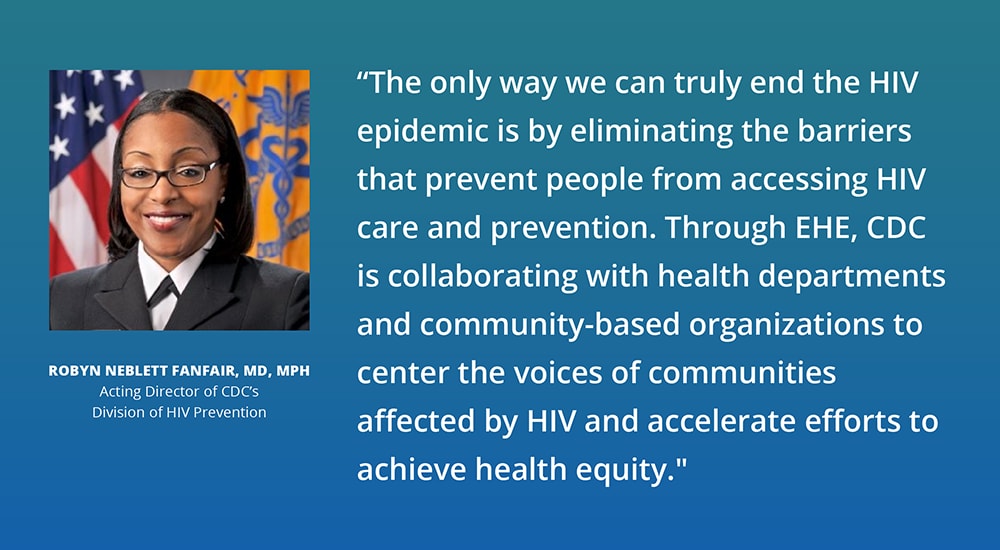Visit the COVID-19 and HIV page for the latest updates on the novel coronavirus outbreak and HIV.

CDC’s Role in the Ending the HIV Epidemic in the U.S. Initiative
Through Ending the HIV Epidemic in the U.S. (EHE), CDC is collaborating with other federal agencies and offices, state and local health departments, and community-based organizations to scale up four key strategies: Diagnose, Treat, Prevent, and Respond. These strategies aim to break down barriers to effective HIV prevention and treatment and ensure all people have equitable access to the tools and services they need to prevent HIV transmission and be healthy.
To reach national HIV prevention goals and address the structural barriers and social determinants of health that have contributed to HIV-related health disparities, EHE infuses the areas hardest hit by HIV with additional resources, technology, and technical assistance to implement proven HIV prevention interventions including:
- HIV self-testing and mobile testing units
- Pre-exposure prophylaxis (PrEP)
- HIV treatment as prevention
- HIV cluster detection and response

Community is at the heart of EHE, and CDC listens to people with and affected by HIV and integrates their needs and ideas into the design and implementation of EHE strategies. With support from CDC, EHE jurisdictions develop local implementation plans that outline their innovative strategies to meet the unique needs of their communities, address social determinants of health, and advance health equity. CDC also supports jurisdictions in implementing comprehensive status neutral and syndemic approaches that dismantle HIV-related stigma and other barriers to ongoing care.
With support from CDC, state and local health departments allocate at least 25% of their EHE funding to community-based organizations to expand access to HIV prevention and treatment and reach people where they are with the comprehensive and culturally competent health and social services they need. These kinds of services can include:
- Housing and employment support
- Mental health services
- Substance use disorder treatment
- Comprehensive sexual health services
Ongoing public health emergencies, including COVID-19 and mpox, have affected the capacity of health departments and community-based organizations to implement EHE-related activities. CDC is committed to achieving national HIV prevention goals and to providing communities with the support and flexibility they need to address new and evolving challenges. To achieve EHE’s 2030 goals, intensified investments are needed to help communities scale up proven and innovative strategies.
Learn more about how CDC supports populations disproportionately affected by HIV here.
Find more information about CDC’s EHE-related milestones and funding here.
For more information on implementing EHE strategies in your community, click here.